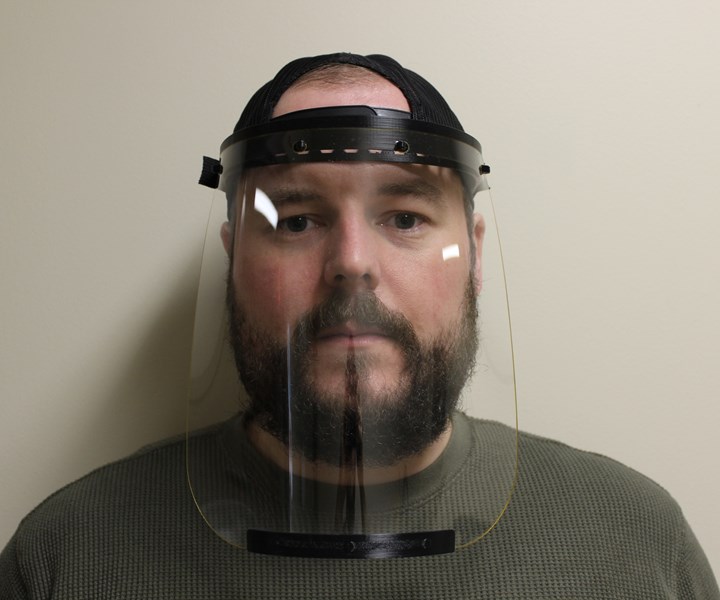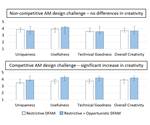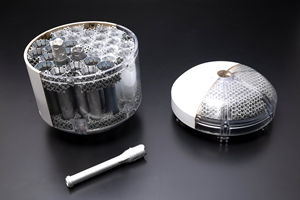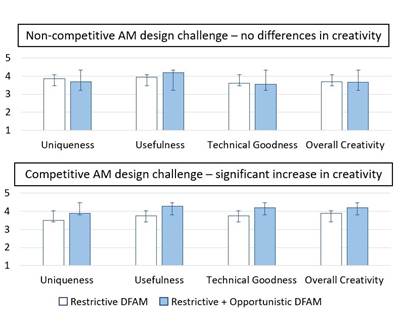Additive Manufacturing in the Age of COVID-19
Reporting from the front lines of the fight against Coronavirus – how my journey began.
Like many around the world, my life, work and travel plans were upended as the Coronavirus made its way to the United States. By the time we returned home, all of Penn State’s classes were told to move online, and I had a weekend to figure out how I was going to teach the undergraduates in my additive manufacturing (AM) and reverse engineering course how to operate 3D printers and gain hands-on experience with 3D scanning. As you might guess, it is quite hard to run a hands-on AM lab course when students are prohibited from setting foot on campus and cannot enter the labs.

Figure 1: Zachery Smith in Penn State’s Applied Research Laboratory (ARL) wears a prototype of the “Prusa” 3D printed face shield (image source: Charlie Tricou, ARL)
Like many other faculty and teachers facing similar situations, I started searching online for new ideas and materials for my course. I was delighted to reconnect with friends, contacts and collaborators at 3D Systems, Autodesk, Xometry, nTopology, RePliForm, 3Degress Consulting, Link3D, The Barnes Group Advisors and many AM companies and service providers who were rapidly mobilizing to share content online, make software freely available to students, and do their best to remain open and offer their services as the United States started to close down. I am forever indebted to them for their assistance and suggestions, and I am delighted to hear what they and the countless others in the AM community have done, and are doing, to help fight COVID-19.
As I was reconnecting with these folks on LinkedIn, I started seeing posts from my connections around the world that were already battling Coronavirus. First on this list was probably the duo in Italy that saved lives by redesigning and 3D printing replacement parts for ventilators in their local hospital. Around the same time, Materialise started sharing their 3D printed hands-free door opener, which circulated quickly on Twitter and other social media. Their design soon found its way to HP’s newly launched 3D printing website to help with COVID as they were collecting cool ideas to help nurses, doctors, and other healthcare workers on the front lines. Meanwhile, the team from Prusa in Prague released the 3D printed face shield design that they had quickly developed and prototyped.
By the time I stumbled on the 3D printed foot pedal door opener from Professor Olaf Diegel and his students at the University of Auckland, I knew it was time to redirect my class project and challenge the students in my AM class to design, develop and prototype their own ideas to help contain the spread of Coronavirus. Having my students make and test a bunch of random 3D printed parts on some material extrusion systems in an AM lab to quantify variability just did not seem important anymore — plus they could no longer access the AM lab anyway. Luckily, a lot of engineering students have their own 3D printers on hand these days; so, my immediate project and lab challenges were solved, and I migrated my lectures online with little hassle.
Meanwhile, as I read these articles and online posts for my class, I started sharing them with friends and colleagues in our 3D printing network across Penn State University, Penn State’s Applied Research Laboratory, and local companies and industry partners. At the same time, I also reconnected with colleagues at Penn State’ College of Medicine at the Hershey Medical Center knowing that they were likely preparing for the onslaught that was coming. Within a day, hundreds of emails started flying around, numerous new connections were formed, and some semblance of priorities were established. Within two days, the team at the Applied Research Laboratory had 3D printed, laser cut, and fabricated the Prusa face shield (see Figure 1). The team at Penn State’s Hershey Medical Center loved the effort and the result, and we quickly started identifying other areas where AM could help.

Figure 2: Matt Parkinson, a faculty member at Penn State, shows off the “Billings” filtration mask that he 3D printed for testing (image source: Matt Parkinson, Penn State).
Figure 2: Matt Parkinson, a faculty member at Penn State, shows off the “Billings” filtration mask that he 3D printed for testing (image source: Matt Parkinson, Penn State).
Ventilators, filtration masks, and other Personal Protective Equipment (PPE) immediately joined the list. We then 3D printed and tested the filtration mask (see Figure 2) that was posted online by the group in Billings, Montana.
The feedback from the doctors at Penn State’s Hershey Medical Center that tested our 3D printed filtration masks has since led to modifications to improve comfort and fit while reducing printing time. This rapid feedback was only made possible through AM, but we all quickly realized that the demand was going to outstrip the supply—and that was just for one hospital. After joking that we would need to fill Penn State’s Beaver stadium with 3D printers in order to meet the demand that was being projected, we pivoted and started redesigning the 3D printed face shields, filtration masks, and other PPE for fabrication with more traditional methods (e.g., injection molding, vacuum forming). These methods could be performed within an ISO certified, GMP compliant facility to help meet FDA regulations, and the resulting PPE could be more easily sterilized.
AM is great, but you can imagine all of the nooks and crannies that the virus could hide in on a 3D printed object. Worse, many of the sterilization protocols that were being proposed (e.g., heating to a high temperature in an oven) for decontaminating PPE for reuse would melt and deform many of the polymers people were using on their 3D printers. So, like many, we are now building out a network of companies that can help us meet industry standards and comply with FDA regulations, which are changing daily as the number of infections skyrockets. The fight has only begun, and we hope we are not too late.
Learn more about Penn State’s Manufacturing And Sterilization for COVID-19 (MASC) initiative.
Related Content
3D Printed Lattice for Mars Sample Return Crash Landing: The Cool Parts Show Bonus
NASA Jet Propulsion Laboratory employs laser powder bed fusion additive manufacturing plus chemical etching to create strong, lightweight lattice structures optimized to protect rock samples from Mars during their violent arrival on earth.
Read More3D Printed "Evolved Structures" for NASA Exoplanet Balloon Mission: The Cool Parts Show #61
Generative design creates stiff, lightweight brackets for EXCITE mission monitoring planets orbiting other stars. The Cool Parts Show visits Goddard Space Flight Center.
Read MoreImplicit Modeling for Additive Manufacturing
Some software tools now use this modeling strategy as opposed to explicit methods of representing geometry. Here’s how it works, and why it matters for additive manufacturing.
Read More3D Printed Cold Plate for an Electric Race Car: The Cool Parts Show #51
An unconventional lattice design and biomimicry are key to the performance of this fluid-cooled heat exchanger for a battery-powered race car.
Read MoreRead Next
The Challenges of Teaching Creativity in Additive Manufacturing
The extensive design freedoms offered in additive manufacturing can be paralyzing. With AM consistently pushing the boundaries of manufacturing, how do we teach people to take risks and be creative with AM?
Read MoreAt General Atomics, Do Unmanned Aerial Systems Reveal the Future of Aircraft Manufacturing?
The maker of the Predator and SkyGuardian remote aircraft can implement additive manufacturing more rapidly and widely than the makers of other types of planes. The role of 3D printing in current and future UAS components hints at how far AM can go to save cost and time in aircraft production and design.
Read More4 Ways the Education and Training Challenge Is Different for Additive Manufacturing
The advance of additive manufacturing means we need more professionals educated in AM technology.
Read More





















